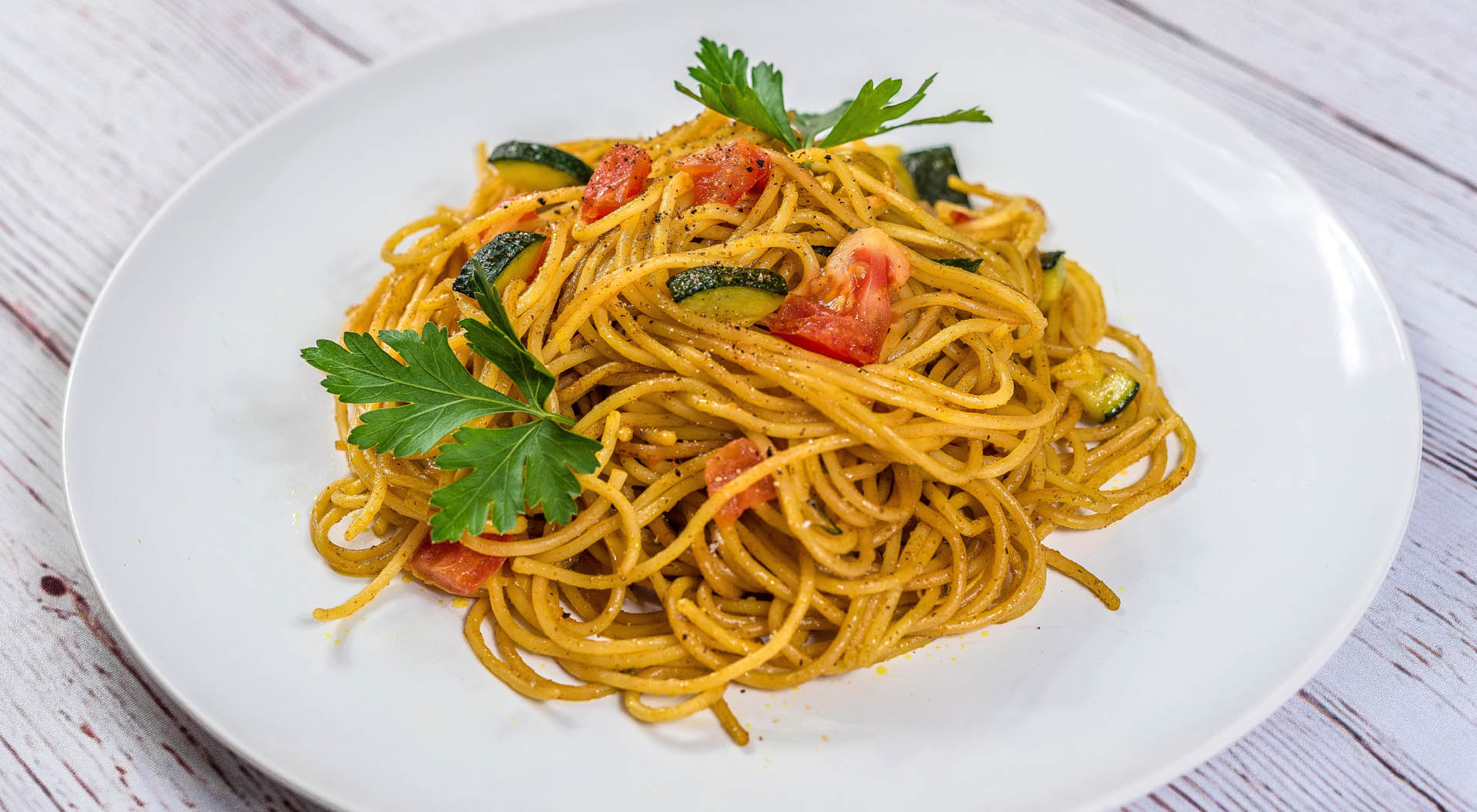The Good News About Italian Pasta

PREMIUM CONTENT for MEMBERS ONLY
As mentioned in my previous post, we recently experienced first-hand the paradox of the modern Italian diet, when we spent some time in Parma, in the Emilia Romana region of Italy. Instead of the expected traditional health-promoting, largely plant-based Mediterranean diet, we discovered that most people in this city were thriving on a diet high in animal products and pasta. And even more surprising was the fact that on average, people were not obese, and had a similar high life expectancy as those living in other regions. In my last post, I focused on the high amounts of animal products (ham and cheese) in the diet of people living in Parma, which didn’t seem to fit with our general concepts of the Mediterranean diet of one high in plant-based foods, with small amounts of red meat. But what about the ubiquitous pasta dishes in the Italian cuisine? Based on the prevalent carbohydrate phobia in the United States, this unique Italian pasta preference should also not be consistent with current dietary recommendations. I decided to look into this question and was helped by a very recent publication by an international group of investigators from Italy, Finland and Canada, with lead author Francesca Scazzina from the Department of Food and Drug, University of Parma.
“…the consumption of pasta elicits lower postprandial blood sugar and insulin responses compared to foods like bread and pizza…”
It had previously been shown in the scientific literature, that the consumption of pasta elicits lower postprandial blood sugar and insulin responses compared to foods with similar ingredients (like bread and pizza), but different structures. Such postprandial glucose responses of foods are of importance since diets containing foods eliciting lower responses favorably affect the risk of common diseases that make up the modern chronic non-infectious disease epidemic. Earlier studies had shown that pasta has a lower impact on postprandial glycemia compared to many other carbohydrate-rich foods, such as couscous and bread.
“…pasta consumption within the limits recommended for total carbohydrate intake has been found to be inversely associated with body mass index…”
Equally unexpected, pasta consumption within the limits recommended for total carbohydrate intake has been found to be inversely associated with body mass index in several observational studies and was not associated with worsening of glucose control, measures of adiposity, and major cardiovascular risk. Finally, in a recent systematic review and meta-analysis of randomized controlled clinical trials, pasta has been found to reduce body weight and BMI, when compared with higher-glycemic index dietary patterns.
To explain this paradox, it has been proposed that structure and protein-starch interactions in pasta products may be responsible for lower postprandial glycemic responses compared with other grain-based foods. The study by Saara Vanhatalo, Francesca Scazzina and collaborators aimed to provide a definitive test of this hypothesis in two randomized controlled trials (n = 30/trial) performed in healthy normal weight adults by evaluating the processing of carbohydrate portions (50g) of durum wheat semolina spaghetti, penne, couscous, and bread. In addition to measuring postprandial glucose and insulin responses, the investigators assessed in great detail the structural and mechanical properties of the ingested carbs.
“…both penne and spaghetti induced lower postprandial glucose and insulin responses than bread or couscous.”
The study showed that both pasta products (penne and spaghetti) induced lower postprandial glucose, insulin, and C-peptide (an indicator of insulin production) responses than bread or couscous, even though they were made from the same ingredients and consumed in equal amounts. Interestingly, spaghetti induced a lower postprandial C-peptide response than penne, presumably due to the structural differences between the two pasta types. They also found that both pasta products required more chews than bread or couscous, and that pasta boluses contained the highest proportion of large particles (greater than 10 mm) while the couscous bolus contained the highest proportion of the smallest particles (less than 1 mm), while the bread bolus values lay in the middle. All the boluses contained a protein network made up of gluten in which starch granules were embedded.
The results of this study elucidate how pasta structure delays starch digestion causing lower postprandial glucose, insulin and C-peptide responses in humans compared to other commonly consumed grain products like bread and couscous, and certainly compared to highly processed sugary foods and juices. Although these other grain-based dishes may be made with the exact same raw material, they differ extensively in the technological processes applied to obtain the final food product.
“…the protein network made up of gluten molecules seems to play an important role in slowing the rapid absorption of wheat carbohydrates in the small intestine.”
Several factors could explain these surprising findings. Contrary to the prevalent gluten phobia in the US, the protein network made up of gluten molecules seems to play an important role in slowing the rapid absorption of wheat carbohydrates in the small intestine. The strong protein network is slowly digested and protects starch granules from enzymatic action in the small intestine. Although couscous had a strong protein network (as seen through microscopy), due to its small granule size, it was more prone to enzymatic action, thus resulted in smaller particles compared to the pasta boluses after in vitro digestion. It would be interesting to know if gluten-free pasta, as now commonly marketed in the US, would show the same favorable slow digestion as the traditional pasta containing gluten.
The observed differences in particle size may play another important role. Earlier studies have clearly demonstrated that the rate of gastric emptying of food is greatly influenced by particle size of food in the stomach: no ingested food is emptied from the stomach into the small intestine, until the stomach grinds it down to particles less than 1 mm in diameter. This explains why the large pasta particles reach the small intestine much slower than the small ones made from bread and couscous. Even though not tested in this study, the traditional Italian way of preparing pasta “al dente”, e.g., with some resistance to the bite and not overcooked, may further contribute to the slower gastric emptying. Finally, the pasta-derived particles (large and smooth-rimmed in shape) have low surface to weight ratio and are thus generally more resistant to enzymatic action compared with small and shredded particles with larger surface area.
“…enjoy the dish in the company of friends and relatives, as the Italian do!”
There are several take home messages from this research study. Not all carbs are bad for us, and the way carbs are processed into pasta may play an unexpected role in making them more gut friendly and mitigating the undesired glycemic effects. The much-maligned gluten molecule seems to be playing an important role in this beneficial effect that is lost in gluten-free pasta products. Whole wheat pasta, containing fiber molecules that slow gastric emptying and absorption may even have an additional advantage. Eating pasta in reasonable quantities, and without burying it in cheese and other high caloric additives will further enhance their health benefit. And most of all, enjoy the dish in the company of friends and relatives, as the Italian do!

Emeran Mayer, MD is a Distinguished Research Professor in the Departments of Medicine, Physiology and Psychiatry at the David Geffen School of Medicine at UCLA, the Executive Director of the G. Oppenheimer Center for Neurobiology of Stress and Resilience and the Founding Director of the Goodman-Luskin Microbiome Center at UCLA.